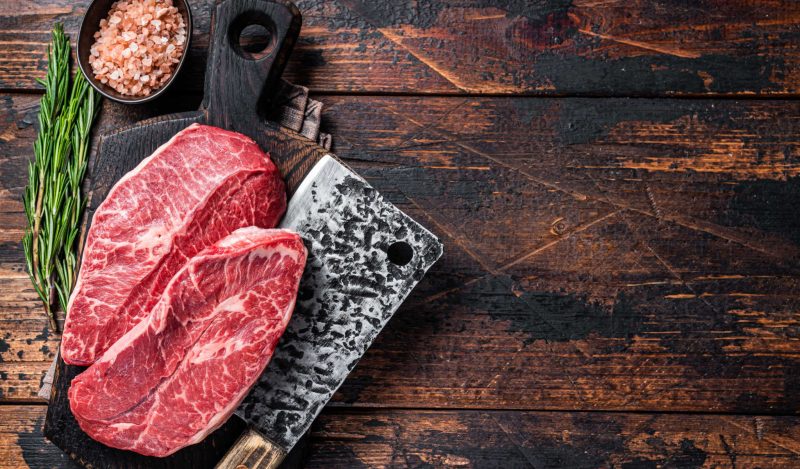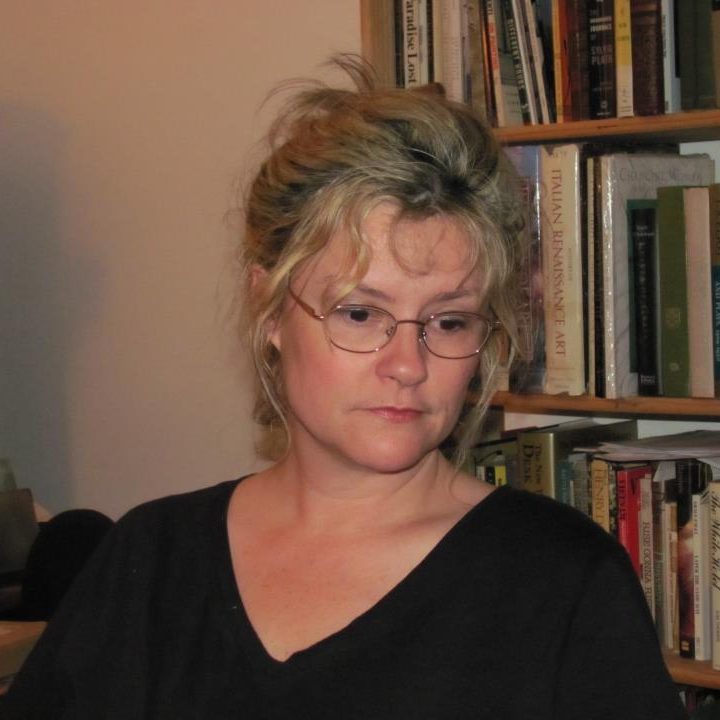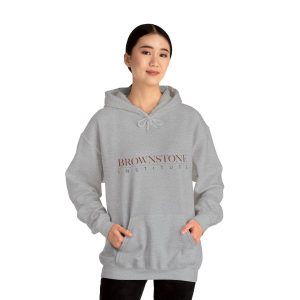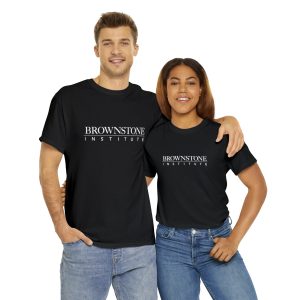Blood smell filled the shop on a recent winter afternoon. It was unmistakable, metallic and musky.
A family friend, Mike, was elbow deep in meat when my husband, Glenn, and I arrived to process a steer from our farm. I learned that this meant we were working together to make this animal into food for our families. We were doing it ourselves because the few local meat processors have been completely booked since the covid crisis began and remain booked for the next two to three years. I had been hearing this same story from farmers all over the country.
Demand for local processors has swelled in the last three years because shutdowns and lockdowns scared people about food sources being jeopardized and supply chains disrupted, so they sought local alternatives. Glenn asked me to join him to learn how this process works.
It was an entirely new experience for me. With economic uncertainties looming, families and friends processing their own, or neighbors’, farm animals may become more common. What we learn in these hard times about growing and sharing food and about neighbors helping neighbors may help us all in years to come.
Mike cut up meat and deboned it. He then fed sections into a grinder. Once the meat was ground, he ground it again while his father-in-law, in his eighties, held a white plastic tube-shaped bag to the opening of the grinder to package it. Mike twisted and tied the bag. These steps were repeated, bag by bag, to make hundreds of pound bags of hamburger. Sitting at a small folding table, Mike’s son wrote the dates on bags with a black Sharpie, making piles of tubes of ground beef. A cat played in a boat that was parked in the shop; another small cat slept on the dusty boat seat.
Mike offered both of us an apple-flavored Busch beer when we arrived. I started helping Mike’s son write dates on tubes of ground beef after Mike filled them. I also took turns holding the plastic tubes up to the end of the grinder. Meat quarters hung, aging, in the walk-in refrigerator. Mike had cut roasts and steaks and vacuum-sealed them into bags. Glenn began doing some of the cutting also.
Mike’s wife, Anita, washed out white buckets and brought clean ones. While we worked, Anita and I talked some about teaching English, about the books we liked to read aloud to students. We are both teachers. The day was bitter cold. A wood stove in the corner provided some relief, but it was still very cold.
About a week before this scene in Mike’s workshop, Glenn and Mike went out to our cow pasture and quickly ended the life of this steer with a single shot to its forehead between and slightly above his eyes. Moments before, the steer ate hay with the rest of the herd. After he fell, the herd continued eating hay next to him. There was no fear. He was born in these fields a couple of springs ago along with about a hundred calves born each spring. His mother had nursed him, and he had played with other calves in the pastures.
Cows and calves on our farm eat mostly grass all year, rotationally graze, so they eat a rich, thick variety of clover, legumes, and various grass species. Their diets are supplemented with hay bales for a couple of months in the winter. They receive minimal drugs and no hormones.
After this steer’s life ended in the pasture, Mike and Glenn cut its neck to release the blood, then used the tractor loader to lift it, remove the hide and the entrails and cut the carcuss into quarters to be hung and aged in Mike’s walk-in refrigerator for seven to ten days. They gathered the hide and entrails, placed them in the compost pile, and covered them with wood chips.
“Within a few months, it will all be dissolved,” Glenn said. “All gone back to the earth.”
In this workshop on a cold afternoon, I remembered how much my sons loved Five Guys cheeseburgers, from the well-known restaurant chain, when they were growing up, and how often I had taken them there, and to many other places to get cheeseburgers, even during the years that I did not eat beef. My sons, as is true for probably most others, did not know how meat comes to our tables. The way we were doing it was rare. Here, together with friends, family, and neighbors, processing this steer, I thought we were a rag-tag set of real “five guys” – or six when I counted Mike’s son.
At the end of the day, we loaded dozens of tubes of ground beef; packages of steaks, and roasts, and stew meat into coolers on the back of the truck. We filled our basement freezers with meat and gave some to Mike and others.
This way of making food from an animal was completely different from anything I had ever seen or heard about or even imagined. I had stopped eating beef or any mammals years before. It was not a political, religious, or even environmental decision; I had simply lost my taste for them. One part of it was that I had felt their suffering after seeing enormous industrial cattle feed lots in the open plains of Texas and New Mexico when on a road trip. I couldn’t forget the filth and misery I sensed from their lives, even by passing on the road in a car near them. They were kept in confined areas and fed mostly corn with the goal of having them gain weight as quickly as possible. In addition, as a mother, who had nursed babies, I felt too much like them. When I had seen cows in the past up close, their gentle eyes found me; their soft faces were configured like mine.
When I began dating Glenn, a cattle farmer, he was surprised I didn’t eat beef and said: “You haven’t had mine yet.” He made chili and spaghetti sauce with our grass-fed ground beef. It tasted different than the store-bought beef I remembered. Cheeseburgers tasted different too. I had never had never eaten meat this good, wholesome and dense and flavorful.
While we were together and after we married, I learned about cattle farming, particularly about the kind of farming we do, which is often called “regenerative farming,” meaning that it tends to the diversity of the earth by letting cows live as they are naturally inclined to live, in herds, grazing on grass while moving to fresh fields as other fields rest. Their grazing like this stimulates grass growth and builds soil health by contributing to the production of millions of microorganisms plus plenty of bugs and worms. In addition, cow pastures grazed like this attract countless species of birds and other wild life.
I helped move the cows every other day or so, watched them in open fields next to the Blue Ridge Mountains where we live, watched them in sunsets, helped to check them or move them in the rain. I helped feed them hay in the snow and watched them play with hay bales and each other as the cold invigorated them. I watched calves being born and so did one of my sons. I helped tag calves, which means finding them within a day or so of their birth ideally, or they become too fast to catch, and then giving them something like a small plastic pierced earring with a number on it to identify them. This is done as swiftly and gently as possible while their immense, strong mother hovers nearby, very worried about what you are doing to her offspring.
They nuzzle beside their sisters in the field, scratch their necks on a tree. I saw the white foamy mouth of a nursing calf as it sidled alongside his mother. She watched the surroundings, licked its ear before he bounded off to run, play with other calves. I watched the young bulls in the side pasture by the house when they pushed into each other’s heads or nudged each other like wrestling teenagers.
While learning farm chores, I saw these cows, calves, bulls, and steers have wonderful lives as nature and God intended them to live. I didn’t remember or imagine their horrible suffering the way I had when I learned about modern agriculture and industrial farming. I remembered sitting out with them by myself at sunset and listening to them breathing, seeing them nuzzle each other in what I imagined was comfort and companionship after their calves had been weaned.
When my husband and I sat down to dinner by ourselves or with friends or family, we ate beef from our farm and squash, potatoes, tomatoes, beets, green beans, and corn from our garden. We bought milk from Christy, at her and her husband’s nearby grass-fed dairy farm. Glenn’s friends gave him cheese, fish, deer meat, and deer sausage as gifts because they come to hunt and fish at our place. Glenn liked getting honey for his coffee from a church friend’s bee hives. We got bushels of apples from a nearby orchard and eat them all winter.
Now, years into our relationship, after gradual change, I do eat beef from animals from our farm and others nearby, from animals whose lives do not feel distant and miserable as the ones I saw in industrial feed lots, where they lived in crammed areas without fresh grass or places for them to lie down. We also get turkey from Glenn’s friend’s farm nearby, turkeys that have light and space to move. It tastes rich and nutrient-dense, like a completely different food from the store-bought, industry-produced turkey.
In contrast to our “five guys” community gathering that winter afternoon, the modern industrialized food industry is impersonal and fragmented. Research increasingly shows it contributes to poor health. In her 2014 book, Defending Beef: The Ecological and Nutritional Case for Meat, Nicolette Hahn Niman writes, “I fully agree that industrial methods for raising farm animals are indefensible. Everyone should join in rejecting them. Having seen it for myself, I have no qualms about calling industrialized animal production a routinized form of animal torture” (p. 235).
Niman writes in her book that she was a vegetarian for many years and then married a cattle rancher. Her book challenges a popular myth that eating beef is bad for our bodies and for the planet. She praises regenerative practices that build soils, enhance biodiversity, prevent desertification, and provide essential nutrients. The book was revised and expanded in 2021.
“Industrial agriculture produces monocultures,” said Glenn Szarzynski, who is a cattle farmer using regenerative practices. “Monocultures are life deserts. A corn field, for instance, has maybe 20 species of plants and animals whereas a cattle pasture has millions. The more diverse the environment, the healthier the food.”
Most people in the US eat beef from industry-raised cows that are fed corn in feed lots. Increasingly, researchers conclude that eating grass-fed beef may improve our health. Studies have found that grass- fed beef has higher amounts of Oomega-3 fatty acids, which have important roles in heart and brain health. Grass-fed beef has also been shown to be more nutrient dense, which is why it tastes better. From my observations, cattle with room to move and graze and rest had healthier lives. Would their healthier lives contribute to ours?
Niman notes that “the everyday workings of industrial facilities utterly fail at providing animals decent lives” (p. 236-237). Szarzynski noted that modern agriculture denies the interconnectedness of life.
“It separates life into units, and nature is not like that,” he said. “If we let it work, life is constantly interconnected, productive, and healthy.” He likened modern agriculture to the modern pharmaceutical industry that “separates everything and everybody and then gives drugs.”
In Mike’s workshop that afternoon, my numb toes started to hurt. I took a break from the work to sit in a tattered armchair by the wood stove, took off my boots, and placed my feet on the edge of the stove to warm them. Anita’s father went out to his truck and got warming packets that hunters use for their hands and told me to put them in my boots. I did. They helped. I would get started again in a few minutes, helping the others.
Published under a Creative Commons Attribution 4.0 International License
For reprints, please set the canonical link back to the original Brownstone Institute Article and Author.




